Introduction Scene (Fash Forward) -
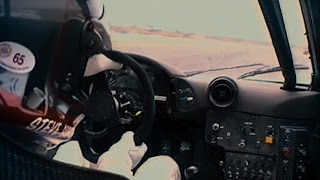 I want this scene to open up the documentary, it needs to be intense and engage the viewer right from the outset. I have seen various opening montages that inspired this style, one of which being "Dirty Money EP2". The use of shots to create an emotion in the viewer is one I would like to replicate. I like how the music layer heightens the drama and makes the scene feel as important as possible. The choice of shots is interesting, I would have liked to have seen some trackside camera shots, but they may not have been available. These shots are put together and cut pretty slowly to build intrigue. I will probably ask for a slightly fast cut, but I am a fan of the use of music, engine noise and atmos to make this opening scene feel epic. As we will have the use of exterior cameras I will also use them to my advantage and add another dimension to my opening scene. My idea for this opening scene is to build up drama and intrigue. I will do this by having various intense car shots (Close Ups/ Onboard where something important is happening/ Fast movement) which will be cut together with a powerful soundtrack and amplified car noises.
I want this scene to open up the documentary, it needs to be intense and engage the viewer right from the outset. I have seen various opening montages that inspired this style, one of which being "Dirty Money EP2". The use of shots to create an emotion in the viewer is one I would like to replicate. I like how the music layer heightens the drama and makes the scene feel as important as possible. The choice of shots is interesting, I would have liked to have seen some trackside camera shots, but they may not have been available. These shots are put together and cut pretty slowly to build intrigue. I will probably ask for a slightly fast cut, but I am a fan of the use of music, engine noise and atmos to make this opening scene feel epic. As we will have the use of exterior cameras I will also use them to my advantage and add another dimension to my opening scene. My idea for this opening scene is to build up drama and intrigue. I will do this by having various intense car shots (Close Ups/ Onboard where something important is happening/ Fast movement) which will be cut together with a powerful soundtrack and amplified car noises.
Link to Reference Material: https://www.netflix.com/watch/80149534?trackId=14277281&tctx=0%2C1%2C48d29dbc-e83c-4314-9010-818ecc29101a-803452542%2C%2C
“Pieces To Camera” -
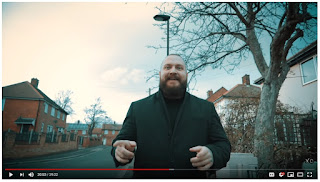 I say pieces to camera as it is easier to define when speaking about these scenes. But in reality, these are scenes where the contributor is speaking to the producer, rather than looking directly at the camera. "Walk the walk" has a visual style that I am taking inspiration from for some of my PTC Scenes. These are shot handheld and in a way to let the viewer into the conversation and almost feel that they are there themselves. I want to replicate this style when I am going through the various hurdles needed to become a racing driver. It is vital to capture these moments of chat and contemplation. I want to go to another level and capture even more shots in these scenes, which at times will be done thanks to a secondary camera. This camera would focus on the ultra-close-up shots while the main camera acquires the Mid Shot. I want to get a lot more cutaways, including moments where I am standing still and observing the world as I contemplate things. The importance of a secondary camera will be seen in the edit. This means we will be sure to get a wider range of shots to be filmed on a secondary camera, capturing close-ups of my eyes and hands etc. These little cutaways will enable the viewer to see another level of what I am feeling.
I say pieces to camera as it is easier to define when speaking about these scenes. But in reality, these are scenes where the contributor is speaking to the producer, rather than looking directly at the camera. "Walk the walk" has a visual style that I am taking inspiration from for some of my PTC Scenes. These are shot handheld and in a way to let the viewer into the conversation and almost feel that they are there themselves. I want to replicate this style when I am going through the various hurdles needed to become a racing driver. It is vital to capture these moments of chat and contemplation. I want to go to another level and capture even more shots in these scenes, which at times will be done thanks to a secondary camera. This camera would focus on the ultra-close-up shots while the main camera acquires the Mid Shot. I want to get a lot more cutaways, including moments where I am standing still and observing the world as I contemplate things. The importance of a secondary camera will be seen in the edit. This means we will be sure to get a wider range of shots to be filmed on a secondary camera, capturing close-ups of my eyes and hands etc. These little cutaways will enable the viewer to see another level of what I am feeling.
Link to Reference Material:
The Diary Room -
 Diary room sequences will play the role of educating the viewer about my history with motorsport and enabling them to grasp a better understanding of why this subject matter means so much to me. My visual reference for this is a video created by Red Bull Racing about the team’s history between 2005 and 2012. They have a number of interview-style sections in which the contributor is speaking off camera to a producer/director asking questions. Not only is this beautifully shot, but the lighting is also used to emphasise the contributor through the use of a key light on them. We also have a light visible in the back of shot which adds extra depth into the shot and also conveniently lights part of the backdrop, which is a Formula One car and some motorsport trophies.
Diary room sequences will play the role of educating the viewer about my history with motorsport and enabling them to grasp a better understanding of why this subject matter means so much to me. My visual reference for this is a video created by Red Bull Racing about the team’s history between 2005 and 2012. They have a number of interview-style sections in which the contributor is speaking off camera to a producer/director asking questions. Not only is this beautifully shot, but the lighting is also used to emphasise the contributor through the use of a key light on them. We also have a light visible in the back of shot which adds extra depth into the shot and also conveniently lights part of the backdrop, which is a Formula One car and some motorsport trophies.
The reason these sequences will be filmed like this and not “on the go” or “raw” is that I want these scenes to have more controlled variables, like the lighting, the focus of the camera and its stability. If these were to be shot as PTC’s then the likelihood is that they will be less stable and focusing will be harder to achieve, especially because I want a deep depth of field. Lighting would also be harder to control “on the go” so, as these sequences compound the importance of the story, I want them to be highly cinematic and powerful. This is powerful in both what is being said and it’s visual elements.
Another decision that needed to make was whether the contributor was addressing the viewer or somebody off camera. Through my meticulous research, I had seen versions of both, and both worked in very different ways. Addressing the camera directly feels less personal as we feel like we are being spoken at, rather than spoken around. But by addressing the camera directly, it is certainly more powerful and personal when speaking about very important subjects. However, through my experience and others who have written articles about this, addressing the camera directly can be awkward as a viewer. This awkwardness means that the majority of documentaries in this genre use the “off camera” technique where the contributor speaks towards a producer.
I have decided to film my Diary Room sequences off camera as this offers me multiple options that I would not have if I were speaking to a camera. Firstly, the comfort level of myself as a contributor would be vastly helped by speaking to someone (The producer in this case) rather than a camera with no human emotions. Directing my response at the producer will allow me to feel more relaxed and open up about my past and the situations that led to this moment. While some may be able to address a camera and evoke the emotion they way, as I have little experience as a contributor, I think I will get the best answers out of myself if we approach these scenes as more of an “observing” into the answers rather than being spoken to. These also look more natural as the presenter is relaxed in their chair rather than sitting upright towards a camera. The sense of these answers being more natural allows the viewer see the real character of the contributor, whereas if it were being directed to the camera, less can be shown due to the more direct cinematic style.
Directing these sequences to a producer is the way forward for this documentary and I have stuck with the principle of this throughout. The camera in this documentary is brought on a journey with me, but I will never directly address it. The issue with directly addressing the camera, especially in these scenes, is that the viewer will feel uneasy with the amount of time the contributor is speaking at them. As humans, we never usually stare at each other while having a conversation, so this fixed style does feel unnatural and makes the viewer feel uneasy. Our aim is to allow the viewer into my life and my story and speaking off camera and allowing the viewer to eavesdrop is certainly the way forward.
These Diary room sequences will be filmed on a tripod with a track and dolly with the Panasonic DVX 200 Camera. This equipment is industry standard and the use of the track and dolly allows there to be subtle movement and these shots should be slightly more interesting because of it. The use of the DVX 200 also allows us to have an incredible depth of field and create a highly cinematic scene with the lighting which will be similar to that of the Red Bull video.
Reference Material: https://www.youtube.com/watch?v=cDMVac2nuAo
Contributor Interviews -
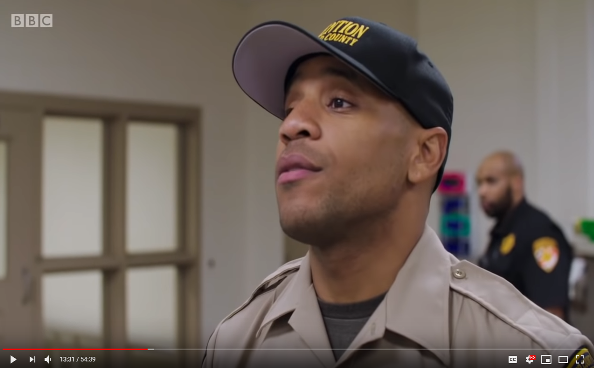 Like with my Diary Room sequences and the rest of the documentary, these interviews will be shot with neither person looking directly at the camera. A good reference for the style I will use when conducting interviews with other people is Reggie Yates when he visits a prison. These interviews are shot with two handheld cameras, one on a two-shot and one getting a close up of either Reggie or the other person in the interview.
Like with my Diary Room sequences and the rest of the documentary, these interviews will be shot with neither person looking directly at the camera. A good reference for the style I will use when conducting interviews with other people is Reggie Yates when he visits a prison. These interviews are shot with two handheld cameras, one on a two-shot and one getting a close up of either Reggie or the other person in the interview.
The reason why these interview sections are so effective is that both people are in a natural environment and both actually doing something. As they are both working the job of a prison officer, they are making the scene more interesting, rather than a sit down staged interview between two people which may mean sense of character and honesty are lost.
 The use of two cameras, which are both handheld, is very effective as it allows the camera operator to have control if the contributor moves slightly or they need to zoom in to get a specific reaction. If this interview were set in a style similar to the Diary room I have been speaking about, it would also create a very different tone to the one used to good effect here. We definitely want these interviews to feel less staged than the Diary room and we will accomplish this by setting these sequences in locations where they would naturally happen.
The use of two cameras, which are both handheld, is very effective as it allows the camera operator to have control if the contributor moves slightly or they need to zoom in to get a specific reaction. If this interview were set in a style similar to the Diary room I have been speaking about, it would also create a very different tone to the one used to good effect here. We definitely want these interviews to feel less staged than the Diary room and we will accomplish this by setting these sequences in locations where they would naturally happen.
An example of an interview we hope to have in our documentary is with a disabled motorsport driver, Billy Monger is our intended interviewee. For an interview section with him, we would ideally meet him at a race track and then speak to him while he is in the garage or observing some cars going around the track. Much like the Diary room, we intend to be eavesdropping on the conversation through the use of a camera. I intend to have a two-camera setup. One as a wide shot with both people in the shot and the other capturing a close up of each person, switching between us as we speak. Both of these cameras will be handheld and the lighting will be natural. Before shooting it will be very important to check how the shadows may appear, as this will be staged in regards to us choosing where is best to film and use the natural light accordingly.
Reference Material: https://youtu.be/Cq25Lq42N7A?t=512
Actuality Sequences -
There will be sequences in the documentary where I will just be going about my everyday life and we want to capture some of those moments in our documentary. An example of this is when my Motorsport helmet arrives in the post, we want to capture my emotions as I see the design for the first time. Good reference material for sequences like these are in Driven: The Billy Monger Story. This documentary allowed me to understand this genre really well and the fact that the subject matter is similar to mine also allows me to draw even more similarities.
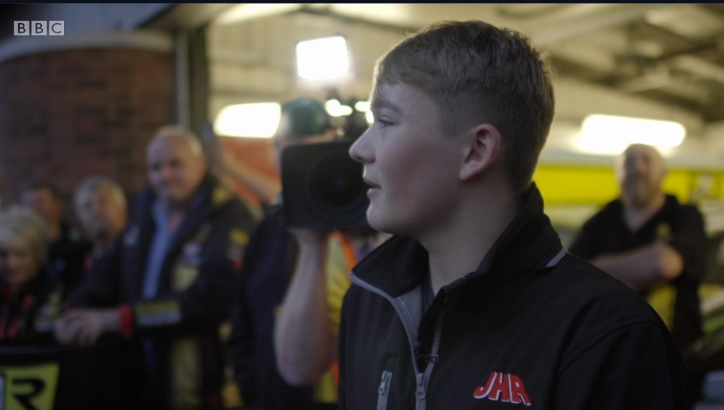 In this show, there are many sequences of Billy just going about his everyday routine and what makes them interesting is the use of the camera. There is a singular handheld camera which just follows Billy around and observes him as he shows the viewer the limitations after his accident. While I am not showing any sort of issue, the use of this style of shot can be used to show a very honest and real look into someone's life.
In this show, there are many sequences of Billy just going about his everyday routine and what makes them interesting is the use of the camera. There is a singular handheld camera which just follows Billy around and observes him as he shows the viewer the limitations after his accident. While I am not showing any sort of issue, the use of this style of shot can be used to show a very honest and real look into someone's life.
For these sequences, the camera will follow me around and generally keep to a wide angle to be sure that it does not miss anything. However, if there ever comes a moment where the action stops, the camera operator will have the freedom to do what he feels gives the most impact. This could include zooming in and capturing the emotion of the scene or continuing to film if I break for a moment of contemplation. Whatever shot will evoke the most emotion in the viewer in a certain situation, is what the camera operator must capture. There will be no script or plan about what they should film, but they should ensure the shot type tells our story in the best way possible. Important communication with the crew will allow me to express the importance of this intuition of deciding what shot works best in the spur of the moment.
For the majority of the PTC, Actuality sequences and driving shots we will be using the Sony AX53 because of its superior Auto Focus (which will be vital when the camera, operator and contributor are all moving) and optical image stabilisation inbuilt in the lens. This high-tech piece of equipment produces some really incredible shots. It allows movement in all types of sequences to be less jarring as the lens is actually moving to help stabilise the image. We know that it will not be silky-smooth but we want there to be some movement otherwise the scene feels too artificial and edited.
Reference Material: https://www.bbc.co.uk/iplayer/episode/p06qx4gt/driven-the-billy-monger-story
Establishing Shots -
Each scene needs an astonishing establishing shot to help set the scene, while also showing the viewer we have been paying careful attention to the cinematography used in this documentary.
When I watch documentaries, the shots that are used to open a scene are always very powerful in setting the tone for what lies ahead. We know that motorsport is a grand sport and we want to highlight that importance throughout, through the use of these establishing shots.
I have tried myself to think of shots that would be iconic when starting specific scenes. One I thought of right away was the driving license scene. When arriving at Brands Hatch, a shot that would really capture the attention of the viewer is a shot of the car driving under the large Brands Hatch sing on the entrance. To make this scene feel even more epic, we would make it look as if the car is small in the shot and the sign is large. This helps to play on the significance of the scene and shows that this is a major part of the documentary.
To film this scene, I can see us using the Panasonic DVX 200 on a low tripod which is angled slightly towards the sky to make the car look even smaller in the shot. The use of the trees and the wide open sky will allow this establishing shot to really ensure the viewer is paying attention. We will see the car driving into the venue with the natural ambience of the track in the background. This will then continue later into the scene as we have a camera in the car looking up at me from the passenger seat. This will be a moment of relative silence in the film, as we are trying to show the nerves that I will be going through, just before I take my test.
Driving Shots -
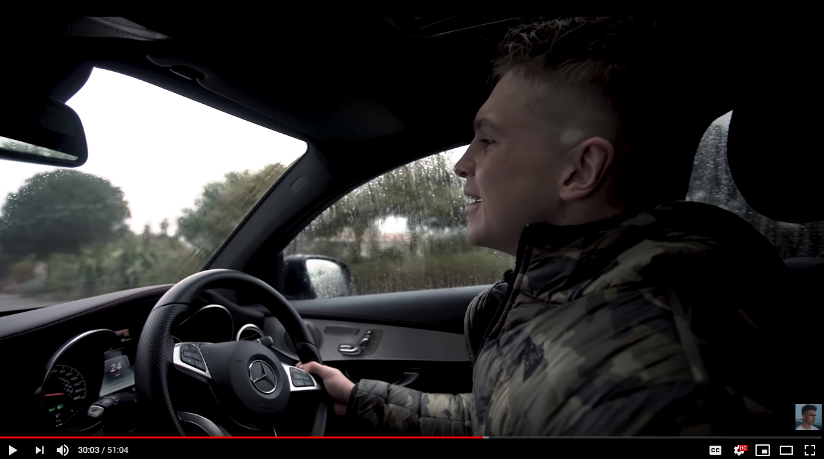 Shots of a person driving in a documentary seem to be very powerful, as it allows the viewer to see the contributor in a natural situation, just airing their thoughts. A really good use of car shots is in the Joe Weller Fighter documentary. He uses car shots to indirectly speak to the viewers about the situation and what he is feeling. These are filmed very much as if you are the person in the passenger seat, speaking to him about the situation. These shots are powerful because they allow the contributor a form of escape from other scenes in the documentary which will have been set up beforehand (interviews, scenarios and challenges) and allows them to be as honest with the camera as they can possibly be.
Shots of a person driving in a documentary seem to be very powerful, as it allows the viewer to see the contributor in a natural situation, just airing their thoughts. A really good use of car shots is in the Joe Weller Fighter documentary. He uses car shots to indirectly speak to the viewers about the situation and what he is feeling. These are filmed very much as if you are the person in the passenger seat, speaking to him about the situation. These shots are powerful because they allow the contributor a form of escape from other scenes in the documentary which will have been set up beforehand (interviews, scenarios and challenges) and allows them to be as honest with the camera as they can possibly be.
I think these scenes are the most natural we will film in our documentary. While the Diary room sequences and actuality sequences will allow me to air my thoughts, as can be seen in the Joe Weller documentary, car scenes often allow the contributor to open up on another level. To ensure we capture these scenes, we will need the use of a wide angle lens. Thankfully, the Sony AX53 I previously mentioned has a wide angle, meaning we can achieve a similar style and shot type to the one used in the Joe Weller documentary. Natural lighting will also be key in these scenes, even if we are driving at night, the use of any sort of artificial camera lights would change the tone of these sections and end up being more staged, like our diary room sequences.
Driving shots do allow a non-constructed view in the mind of the presenter that would be hard to replicate anywhere else. They will also be really useful in transitioning between scenes and allowing the viewer to see the progression of the presenter from one moment to the other. While our diary room sequences are looking to the past, these car sequences will be looking at the present and the future, this allows us to show the whole scope of this story.
You can see we are mixing between the highly cinematic scenes of the race, Diary room and establishing shots, with the nitty-gritty raw scenes which are mostly a form of actuality sequences. The combination of the two will allow us to have both a very honest and emotional story while building drama and tension through other ways, such as the sense of speed while racing and the drama of a key-lit room.
Reference Material: https://www.youtube.com/watch?v=S97vorMfyDo
Moments of Reflection & Reaction -
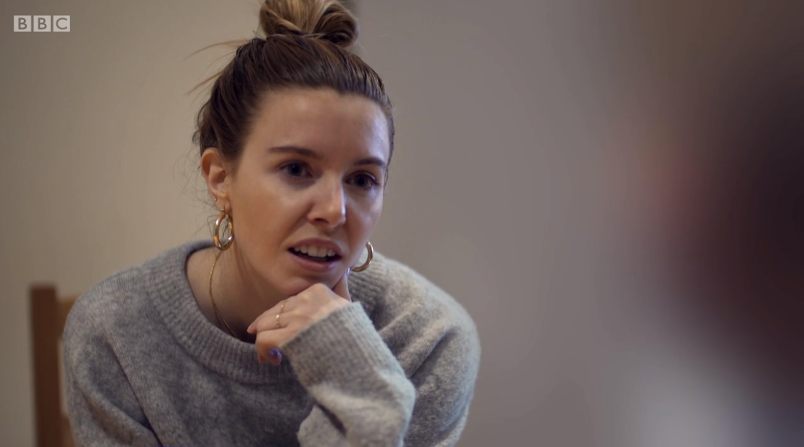 It will be so important to have moments of pause and reflection in our documentary, otherwise, we will be jumping all over the place with so many different emotions and feelings. A documentary that uses the power of silence is “Stacey Dooley Investigates: Shot by my neighbour”.
It will be so important to have moments of pause and reflection in our documentary, otherwise, we will be jumping all over the place with so many different emotions and feelings. A documentary that uses the power of silence is “Stacey Dooley Investigates: Shot by my neighbour”.
Stacey is a very experienced presenter who involves herself within a subject matter. Her moments of pause, especially in an interview, allow the viewer to connect with her emotions. Silence is very powerful, especially when it lasts for a comfortable amount of time. This long length in time is allowing the viewer to comprehend what is happening and what their opinions are. Without these moments, both the viewer and the presenter have no time to reflect, as the project is moving so fast.
While the general pacing of my documentary will be fast because of the subject matter and how many things need to be shown, the moments of reflection, contemplation and understanding allow the rest of the documentary to have meaning. This is definitely something I am going to have to learn fast as a contributor and a director as I may struggle at first to know when is a good time to have a pause. But saying this, I should be able to understand the majority of moments where I need to have a moment when I know what I want to say.
These moments will pop up throughout our documentary as we are constantly trying to show what this means to the presenter and at the same time, show the importance of taking the subject matter seriously. I am confident in my abilities as a contributor/presenter in guiding the story along and allowing moments of pause. I am under no illusion that it will not be perfect straight away, but I will quickly learn what I need to be doing as a presenter to ensure the tone is consistent throughout.
Reference material: https://www.bbc.co.uk/iplayer/episode/p06jy0dl/stacey-dooley-investigates-shot-by-my-neighbour
The Race day -
The main race day is going to have a contrast of highly planned shots and actuality sequences like we have previously mentioned. A great example of a documentary that has done something similar is “Sir Chris Hoy - 200mph at Le Mans”. When speaking in the pit garage and motorhome, the handheld camera is used to follow key members and allow them to voice their opinion, but the shots are not particularly beautiful and are just a mid shot of the person speaking to the producer off-screen. These moments are contrasted with the speed and sound of the race through the use of onboard shots and trackside cameras which show a high sense of speed and drama. I would have actually improves this documentary by having a number of cameras from the team out on the track, capturing even more intense shots. This documentary used footage from the TV which still showed a sense of speed, but the shots were still quite wide. I want to have some shot which is closer to the action so we will have a few cameras capturing close-ups and ultra close-ups, while others will capture the generic mid and wide shots. 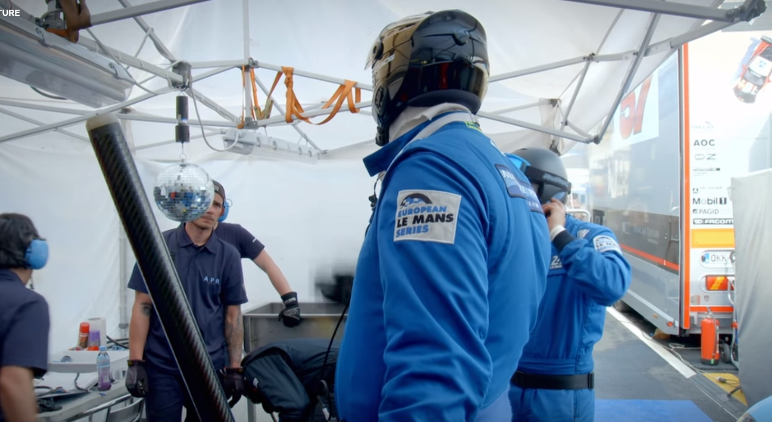

We will have a variety of equipment at our disposal for this sequence and extra camera operators. We will have a total of 5 camera operators and 5 cameras all with different capabilities. Upon testing via test shoots, we will understand which camera is best used in specific areas of the track. We have decided that from experience, however, the SONY AX53 will be used to capture clips in the pit garage, including soundbites from the team, as it has the most stable lens.
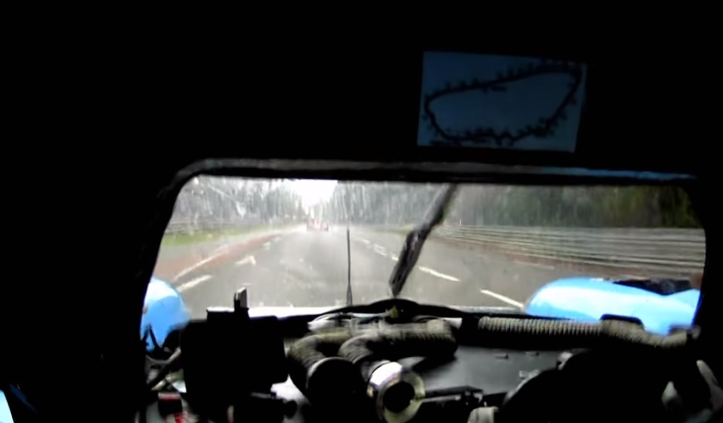

Reference Material: https://vimeo.com/188152852
The mix between highly scripted shots and unscripted shots will allow the viewer to see both sides of the motorsport race. The highly scripted shots will allow the sense of speed through well-crafted shots and great use of action cameras onboard the car. The unscripted shots will be just as important in capturing the task of racing and how hard it really is. Mixed together these will create a very meaningful sequence, hopefully ending in a good result for the team!

No comments:
Post a Comment